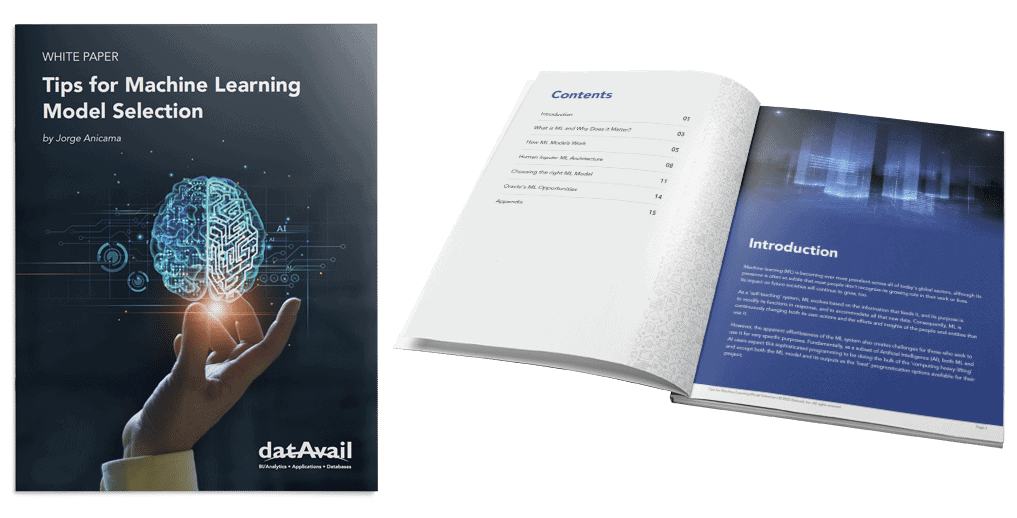Tips for Machine Learning Model Selection

Machine learning (ML) is becoming more prevalent across all of today’s global sectors, although its presence is often so subtle that most people don’t recognize its growing role in their work or lives. Its impact on future societies will also continue to grow.
As a ‘self-teaching’ system, ML evolves based on the information that feeds it, and its purpose is to modify its functions in response, and to accommodate all that new data. Consequently, ML is continuously changing both its own actions and the efforts and insights of the people and entities that use it.
However, the apparent effortlessness of the ML system also creates challenges for those who seek to use it for very specific purposes. Fundamentally, as a subset of Artificial Intelligence (AI), both ML and AI users expect this sophisticated programming to be doing the bulk of the ‘computing heavy lifting’ and accept both the ML model and its outputs as the ‘best’ prognostication options available for their project.
What they often don’t do is give much thought to whether their particular ML model – its design, intent, and architecture – provides them with the essential information they seek.
Download our paper to learn detailed answers to the following questions:
- What is ML and Why Does it Matter? – Machine learning is a term credited to Arthur Samuel of IBM, who in 1959 proposed that it may be possible to teach computers to learn everything they need to know about the world and how to carry out tasks for themselves.
- What Fundamental Functions do Today’s ML Systems Perform? – Today’s ML systems perform one of three fundamental functions
- How ML Models Work? – ML involves developing a model (a function approximation with its corresponding parameters) that fits best (minimizes the prediction error) to the available data.
- What are the Human Inputs in ML Architecture, and the Elements of the Pipeline? – The ML model chosen is just one element of the completed ML architecture pipeline. That pipeline requires several components to ensure the ML algorithm can access appropriate data and apply its computing processes within stated algorithm parameters to achieve valuable prediction outputs.
- How to Choose the Right ML Model – There is no absolute correct answer, it will depend on the business problem at hand to resolve. The best ML model can be viewed from different angles: performance, speed to deployment, easier training, etc.
- What ML Opportunities Exist in Oracle Analytics Cloud (OAC)? – As a global leader in ML processing, Oracle provides its customers with state-of-the-art ML models and analytics services, all bundled conveniently into its Oracle Analytics Cloud (OAC). OAC encompasses all aspects of the ML pipeline development and deployment systems, allowing users to visualize the significance of their data for application within their unique business inquiries.
- How Can Datavail Help Organizations with their OAC Initiatives? – Most companies aren’t in the business of building internal ML algorithms and processes, let alone deciding which ML model to include in their ML pipeline. They rely on Datavail’s Oracle Analytics Cloud (OAC) and ML experts to provide those services for them to enhance their productivity quickly and efficiently.
As an integral technology business partner, Datavail helps its customers integrate and manage their data, including tuning their ML engines, migrating datasets to more productive data stores, and performing other digital services to enhance business outcomes. Connect with Datavail today to get started on your organization’s ML journey.
Download the White Paper